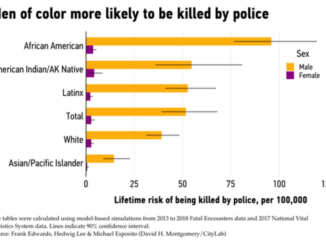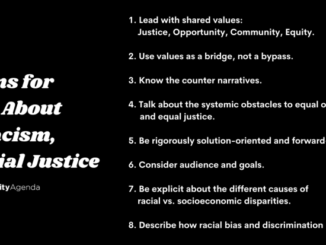
When we think about racism in schools we are always drawn back to the idea of separate bathrooms, sitting at the back of the bus, and derogatory comments made to students of some ethnic or religious minority. However, a bigger problem it today’s school is the idea of institutional racism, one that is not as easily seen, but the effects are the same. In May 1998 a teacher named Evelyn Hanssen wrote a piece entitled, A White Teacher Reflects on Institutional Racism, in this piece she goes on to site multiple occurrences of institutional racism that she felt had a profound effect on both the students and the faculty, even though most of the time they might not have even been aware of it. It is these ideas that we will be looking at in regard to a chapter in Malcolm X’s autobiography to illustrate and give examples from a famous case in American history.
Institutional Racism: Discussion based on Hanssen and Malcolm X
Most of the time, when a teacher first enters the workforce, he or she envisions themselves as some that is going to make a positive influence in their student’s lives, that they will be free from prejudice and labeling and that they will give every student an equal chance at learning. This is exactly what Evelyn Hanssen wanted, as she stated in her piece on institutional racism. What she found however, was that not all things work out in real life like we would ideally have them to be. It was amazing to her that even thought her colleagues, supposedly educated people, were making racial biases that even thought they might not have been conscious of, were still occurring. In one instance, she sat in on an English department meeting in order to decide the new curriculum for the students. She was surprised to find that many African-American works were rejected, even though they were a better fit for the classes on the basis that they were to, sexually explicit (Hanssen 1998). She also was stunned to see an obviously qualified African-American teaching candidate overlooked for an inferior white person for a job opening in her school. When questioning the administrator about the hiring, she was told that while it is important to hire minorities it was hard to find suitable candidates. When Hanssen reminded the person about the overlooked candidate, she was treated to an example of circular logic that never quite did explain why the African-American candidate was not hired. This idea is the basis for her entire paper that people, although they may not be aware of it, do hold some racism ideas, and this can affect minority students in a profound way, as is exhibited in Malcolm X’s autobiography.
In Malcolm X’s autobiography there is a chapter entitled, Mascot, where he goes on to describe his experiences in school that lead to him to become what he was. In the chapter he discusses many examples of institutional racism, the fact that he was the only black student in his class and although many of the instances that people today would have been seen as horrible examples of racism were simply what was acceptable during the time he grew up. The overuse of the word, nigger, while definitely something that is meant to separate Malcolm from the other students did not seem to be as harmful, but as he puts it, he was something of an oddity, kind of like a pink poodle, and even though he was not supposed to talk to the white girls or exhibit any kind of ethic pride, he was seen as a mascot of sorts, something different that people somehow gravitated to based only on one aspect of his character, his skin. (Malcolm X, 1964)
Being a mascot may of seemed like something that was a good thing in some aspects, but when Malcolm realized that even though he was somewhat accepted, there were some things that today would be classified as institutional racism. He gives an example of when he is attending a class taught by what he thought as an excellent teacher who always helped him along, but at the same time when Malcolm expressed the desire to become a lawyer, the teacher basically laughed at him and told him that he needs to see the real picture, and that as an African-American, he would never be a lawyer and that it would be better for him to be a carpenter instead. This is very much an instance of institutional racism, for even thought the teacher thinks that he is helping Malcolm by telling him how he perceives how the world works, in fact he in hampering Malcolm’s ability to be who he wants to be. What happens in this instance is the same thing that happens way to often, and after that, that teacher was no longer a favorite of Malcolm’s, and he dreaded going to the man’s class, thinking differently now about the teacher than before the racist comments were made.
As teachers, we need to be aware of many different things that can hamper a child’s ability to learn. We need to be careful not to say or do things that may negatively influence a child, even though we might be thinking that it will help them. Even if you in your heart do not believe that the student can be what he/she wants to be, as a teacher you need to help them with there dream no matter what. If what Malcolm described ever happened in one of my classrooms I would be sure to step in as quickly as possible and assure the child that with hard work, honesty and integrity, they could accomplish whatever they wanted, regardless of what other people wanted. After all, if no one tried to change what was expected of them, this world would be a lot different than it is today, and we would never know of the efforts of some of the most influential people in the world.
References
Hanssen, E. (1998). A white teacher reflects on institutional racism. Phi Delta Kappan
79(9), 694-698.
X, Malcolm; with Haley, Alex (1964). Chapter 2: Mascot. In The autobiography of
Malcolm X. NY: Ballentine Books. pp. 27-44.
Unless otherwise stated, PONIREVO and/or its licensors DO NOT own any intellectual property rights in the website and material on the website. Majority of the site’s content has been scraped and auto posted by a third party artificial intelligence program —– PONIREVO Creation Team.
Proudly WWW.PONIREVO.COM



